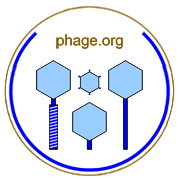

A phage genome as it exists during a lysogenic infection.
Prophages are formed upon either upon chromosomal insertion or plasmid formation during infection and are lost either upon induction or curing.
Prophages are associated with lysogenic conversion. Coinfection between productively infecting phages and prophages leads to recombination which in turn gives rise to substantial levels of mosaic evolution among phages. In addition, multiple prophages of different phage types can be present within a single bacterium, a phenomenon known as polylysogeny.
The concept of prophage referred, historically, to an unknown, non-virion state that phages enter into upon lysogenization of a bacterium. Thus, in terms of lysis generation, the prophage was a state that comes before the "phage" state, that is, with the phage state defined for example as a virion. See also provirus.
This is the definition from Adams (1959), p. 441, "The form in which phages are perpetuated in lysogenic bacteria."
For more on this topic, see Wikipedia, Google, and PubMed. Contact web master. Return to terms.